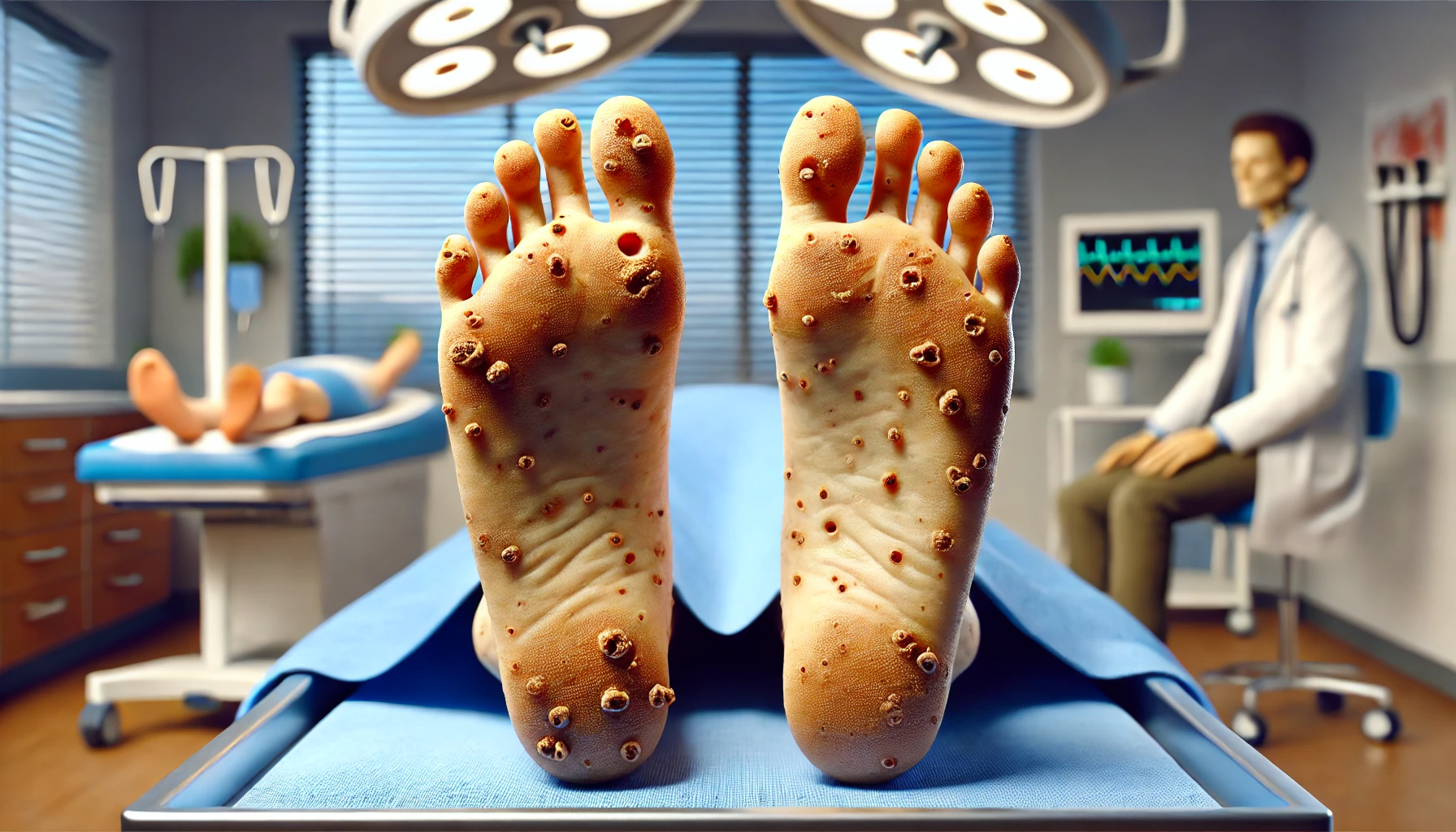Pitted Keratolysis: An Overview
This post was written with Consensus AI Academic Search Engine – please read our Disclaimer at the end of this article. Pitted keratolysis is a common bacterial infection of the feet that can be effectively managed with topical treatments such as benzoyl peroxide and chlorhexidine scrub. Preventive measures, including the use of ZnO-NP coated socks, can also play a crucial role in managing this condition. Further research is needed to optimize treatment protocols and explore new therapeutic options.
Pitted keratolysis (PK) is a bacterial skin infection that primarily affects the soles of the feet, leading to the formation of small, crater-like pits on the surface of the skin. This condition is often accompanied by an unpleasant foot odor, which can significantly impact the quality of life, especially for individuals in professions requiring prolonged periods of standing or walking, such as military personnel and security guards.
Etiology and Pathogenesis
PK is caused by bacterial species such as Corynebacterium, Dermatophilus congolensis, and Kytococcus sedentarius. These bacteria produce proteolytic enzymes that degrade the keratin in the stratum corneum, resulting in the characteristic pitting of the skin. The condition is exacerbated by moist and occlusive environments, which promote bacterial growth.
Clinical Presentation
Patients with PK typically present with multiple small pits on the weight-bearing areas of the soles. These pits can coalesce to form larger erosions. The condition is often associated with a malodorous smell due to the bacterial activity. The diagnosis is primarily clinical, based on the appearance of the lesions and the characteristic odor.
Treatment Options
Several treatment modalities have been explored for PK, focusing on both the eradication of the causative bacteria and the reduction of foot odor.
Benzoyl Peroxide
A randomized controlled trial compared the effectiveness and safety of 2.5% and 5% benzoyl peroxide (BP) gels for the treatment of PK. Both concentrations were found to significantly reduce foot odor and improve the appearance of pitted lesions, with no significant difference in side effects between the two groups. Due to similar efficacy and safety profiles, 2.5% BP may be preferred for treatment1.
Chlorhexidine Scrub and Zinc Oxide Nanoparticles
Another study evaluated the cost-effectiveness and safety of 4% chlorhexidine scrub and zinc oxide nanoparticle (ZnO-NP) coated socks, both as monotherapy and in combination. The combination therapy showed the greatest reduction in foot odor, although the difference was not statistically significant. Chlorhexidine scrub alone was found to be the most cost-effective treatment option2. Additionally, a separate study confirmed the cost-effectiveness of 4% chlorhexidine scrub compared to 4% erythromycin gel, with both treatments showing similar clinical outcomes3.
Zinc Oxide Nanoparticle-Coated Socks
ZnO-NP coated socks have been investigated for their ability to prevent PK and associated bromodosis (foot odor). The antibacterial properties of ZnO-NPs make them a suitable additive for textiles, providing a preventive measure against PK in high-risk populations4.
Disclaimer
The content presented in this blog is generated by Consensus, an AI-powered academic search engine, and is based on publicly available scientific literature. While every effort is made to provide accurate, up-to-date, and well-researched information, the content is intended for informational and educational purposes only. It does not constitute medical advice, diagnosis, or treatment. Always consult a qualified healthcare professional before making any decisions regarding medical conditions, treatments, or medications. The AI system’s analysis may not cover all perspectives, emerging research, or individual cases, and it is not a substitute for professional expertise. Neither the blog publisher nor the developers of the AI-powered search engine are responsible for any actions taken based on the information provided in this content. Use of this information is at your own risk. Citations to the original scientific studies are included for reference, but these studies should be reviewed in full and interpreted with the guidance of a healthcare or research professional.
If you are experiencing a medical emergency, please seek immediate attention from a healthcare provider.
